Oil Analysis or Vibration Analysis?
 Which Is Better and When to Use Each Technique
Which Is Better and When to Use Each Technique
Vibration and oil analysis are two highly effective predictive maintenance techniques that have been used for decades. Other techniques such as thermography and sensory inspections can be applied to maintenance as well. However, to determine the most appropriate maintenance actions, it is necessary to analyze each asset and consider various perspectives.
Vibration Analysis
Vibration analysis has been described by many as the best way to detect machine failure, including the degree of severity. It also is used as a tool to validate the acceptance of a machine after it has undergone some intervention.
Vibration analysis can be applied to various types of rotating assets, such as electric motors, pumps, reducers, fans, power generators, compressors, turbines, etc. It is an excellent tool to identify misalignment, unbalance, mechanical clearances, belt defects, warped shafts, defective bearings and gears, cavitation, lubrication defects, etc. In more advanced applications, it is possible to identify resonance in static structures.
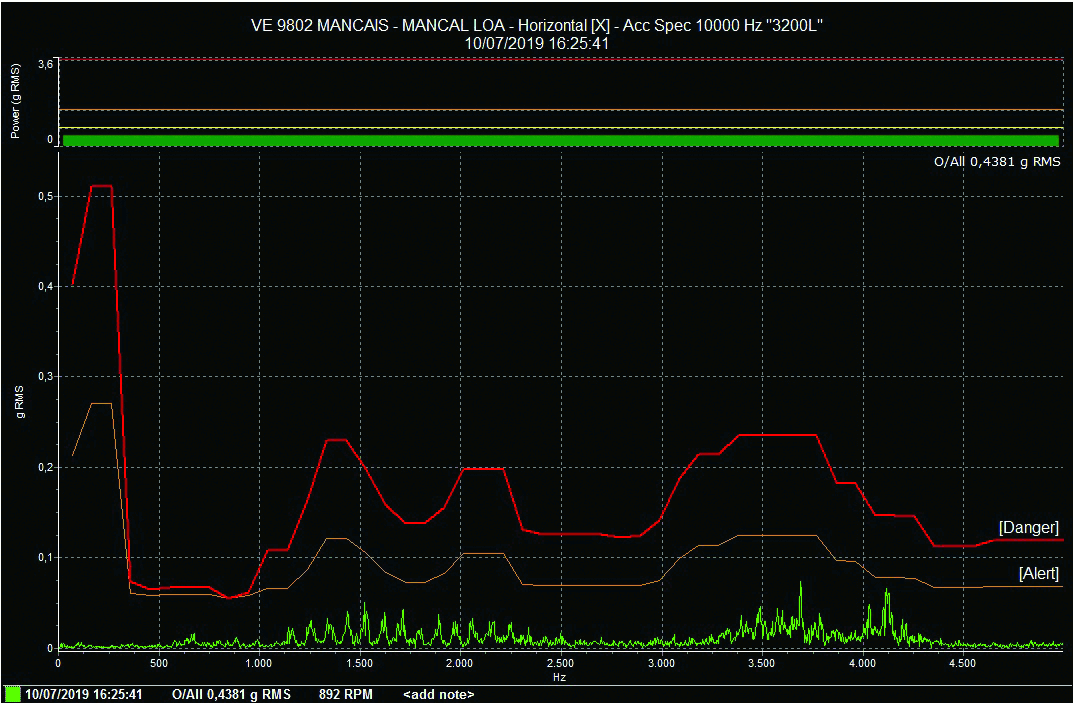
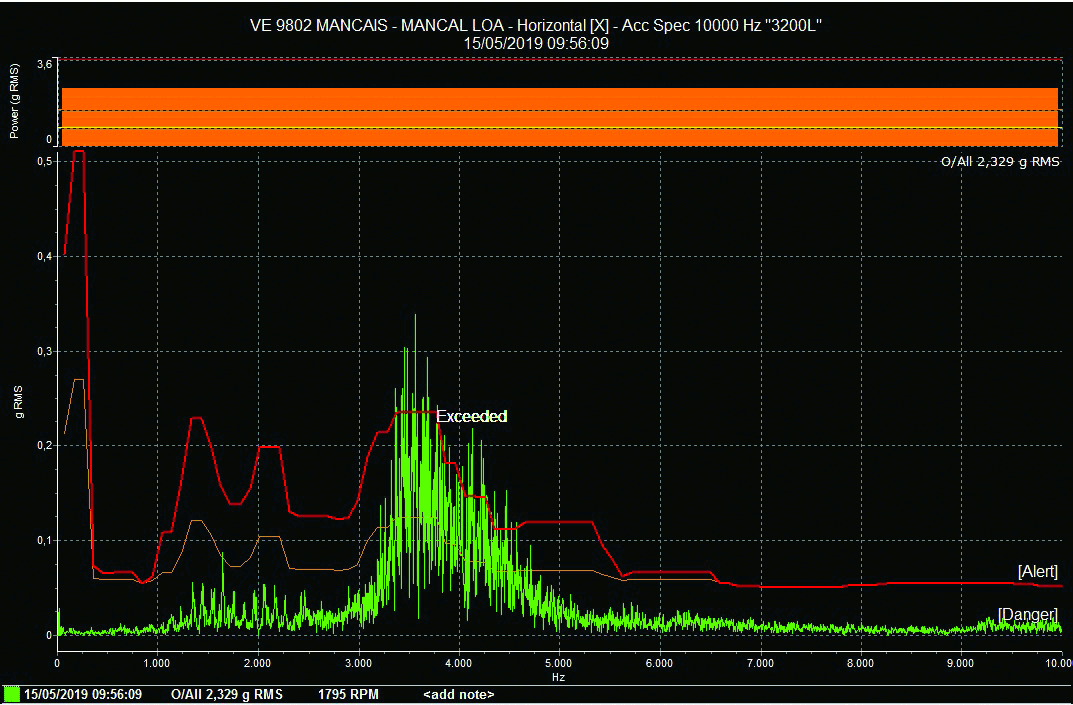
Vibration analysis offers many benefits, as the non-destructive or non-invasive techniques cover nearly 80 percent of a plant's machinery. With the results, maintenance teams can drive a variety of improvements, such as better foundation conditions, proper alignment, improved balance quality, and reduced or even eliminated chronic machine problems.
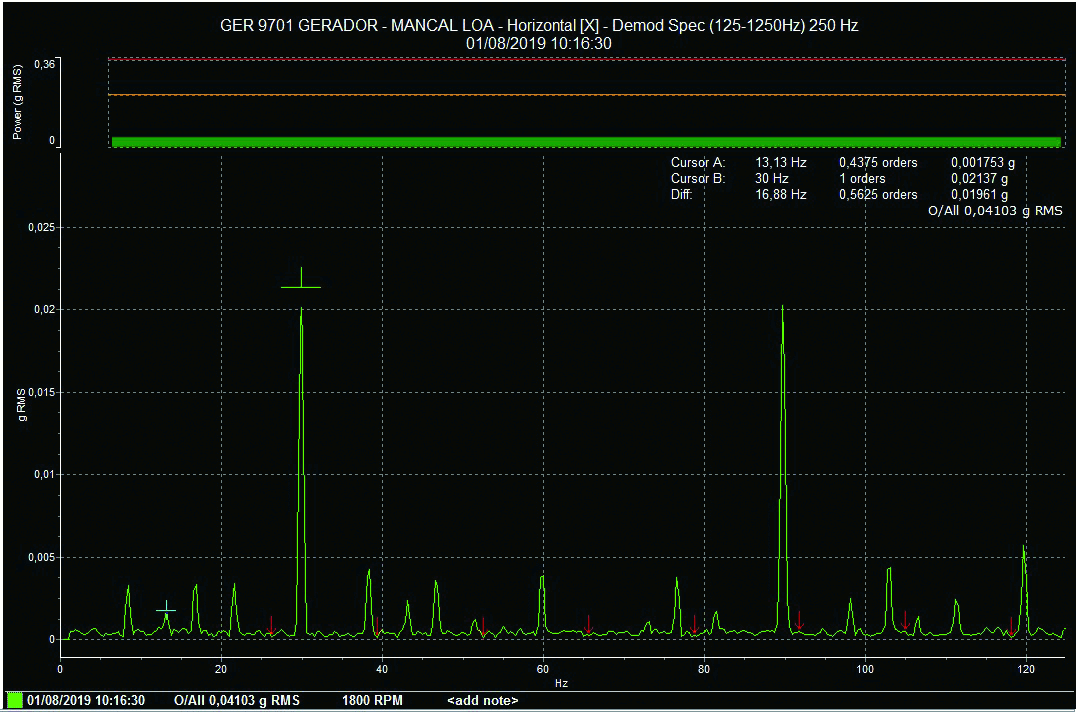 Several vibration analysis tools can be used based on the characteristics of the machines, such as kurtosis, fast Fourier transform (FFT), envelope analysis, spectrum analysis, etc. These tools can be applied according to the fault modes you wish to monitor. Each failure mode is identified in the spectrum by the displayed symptoms. For example, unbalance is characterized by one times (1x) the rotation, while misalignment is classically identified by one and two times (1x and 2x) the rotation.
Several vibration analysis tools can be used based on the characteristics of the machines, such as kurtosis, fast Fourier transform (FFT), envelope analysis, spectrum analysis, etc. These tools can be applied according to the fault modes you wish to monitor. Each failure mode is identified in the spectrum by the displayed symptoms. For example, unbalance is characterized by one times (1x) the rotation, while misalignment is classically identified by one and two times (1x and 2x) the rotation.
A very common symptom is the presence of a high-spectrum carpet value, which always denotes lubricant failure, either due to an absence of lubrication, excess lubricant or contamination. When the lubrication team is integrated with the vibration analysis team, these cases can be well-controlled.
Other symptoms include an oil vortex or dry vortex. Symptoms of these defects are characterized in the frequency spectrum by 0.42 to 0.48 times the revolutions per minute (rpm). They usually are found in sliding bearings with oil that operates under pressure at high speeds. When this occurs, the oil pushes the shaft into the bearing, accelerating its wear. This can be minimized or eliminated by changing the oil speed.
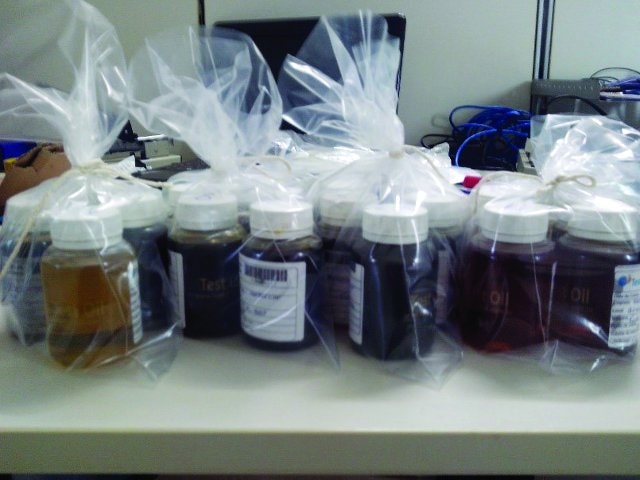

Oil instability is very severe and can lead to bearing play. This instability sometimes happens when the oil whirl frequency coincides with the critical machine speed. This special condition of shaft resonance with the oil's turning frequency results in a more serious form of whirlwind, called oil whip. In this case, the vortex speed will keep up with the critical rotor speed and will not disappear even if the machine operates at higher speeds. This event is highly destructive.
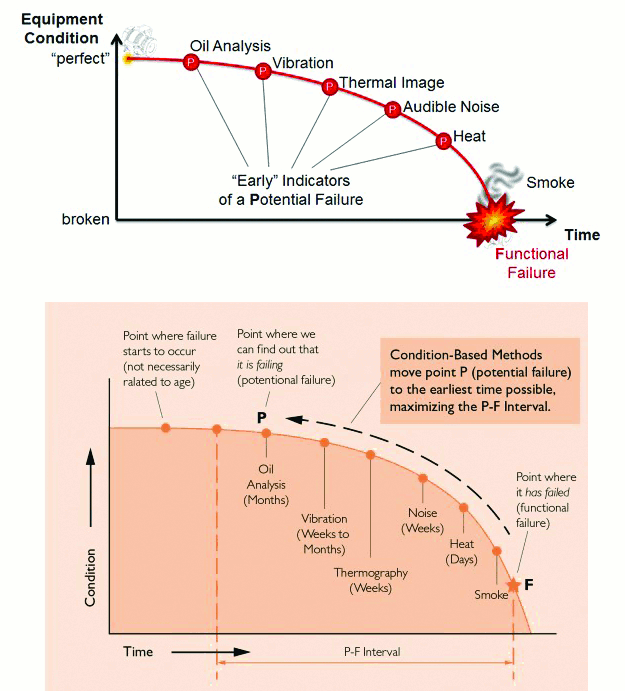 Rolling vibrations can also be caused by improper lubrication. This is easily noticeable in the spectrum, as the friction of the bearing with the shaft raises the carpet. This frictional force can excite other machine frequencies as well. Figures 1-2 illustrate this symptom, which is called carpet.
Rolling vibrations can also be caused by improper lubrication. This is easily noticeable in the spectrum, as the friction of the bearing with the shaft raises the carpet. This frictional force can excite other machine frequencies as well. Figures 1-2 illustrate this symptom, which is called carpet.
Figure 3 shows an example of slight oil instability, which in this case is still within the acceptable values. This frequency is from a bearing within a power generator. It can serve as a monitoring target, as it indicates the health of the machine.
Oil Analysis
Oil analysis is also widely used to diagnose the condition of equipment. This technique has produced considerable information and contributed greatly to asset reliability. It is very useful in monitoring the condition of reducers, compressors, turbines, pumps, transformers and hydraulic systems.
When a machine is in operation, there is continual friction of its components due to particle generation. The particles generated by this friction typically are charged by the lubricant, which can be easily identified through oil analysis.
Just as vibration analysis has several tools that can be used according to the failure mode to be monitored, oil analysis has parameters that must be selected based on the machine’s characteristics. It is critical to choose the appropriate analysis tests for identifying abnormal oil wear particles, customizing each test according to the different types of equipment.
In addition to the use of particle counting, which is one of the techniques that best characterizes lubricant severity and condition, trend analysis of this condition is also very important. This trend will alert you to how quickly you must intervene. Global values quantify the severity of the problem. However, it is not enough to simply characterize the problem. With this technique, the frequency spectrum is used.

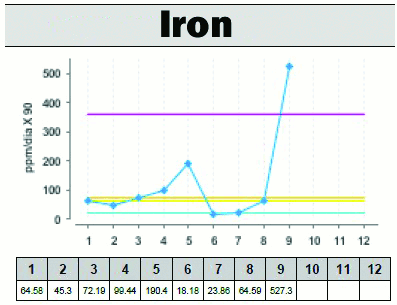
In oil analysis, when a certain amount of iron is detected in the oil sample, no conclusion can be reached if you do not observe the morphology of the particles. Large particles describe the onset of wear, in which case changes in vibration analysis may already be seen. Thus, the shape and size of the particles are essential to indicate the source of the problem.
The most common types of oil analysis provided by laboratories are viscosity, particle count, water content, acid number, base number and particle size. Keep in mind that water in oil has been shown to greatly accelerate equipment wear-and-tear and requires urgent intervention. This contaminant is very aggressive to machine components, increasing both the oil oxidation process as well as the friction between metals.
A good lubrication plan will clearly describe the entire sampling process, including how to collect, store and transport oil samples to ensure the reliability of the analysis results. This is why lubrication technicians should be trained for these tasks. Care and guidance on how to perform sample identification and submission for analysis will be of no less importance.
Figure 4 shows how oil analysis often manifests ahead of vibration analysis in the cases of bearing failure detection in low-speed gearboxes.
Oil analysis also comes to the forefront with mineral impurities and increased amounts of metal particles (iron, steel, copper, etc.). The elevation of these values can be perceived early with oil analysis before being identified by vibration analysis.
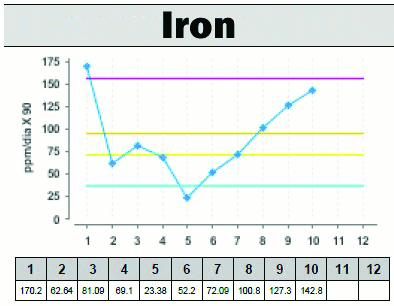
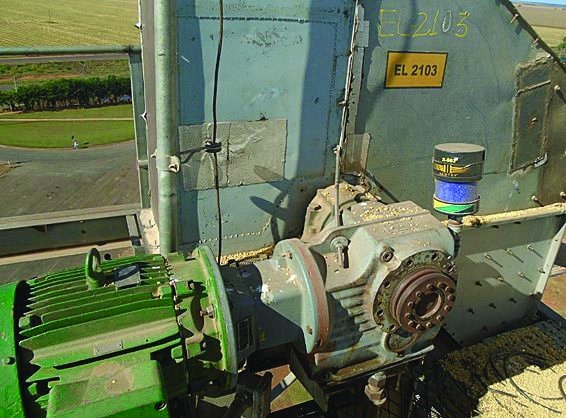
Vibration Analysis vs. Oil Analysis
There are many examples of vibration analysis and oil analysis working well and complementing each other, such as for a bearing lubrication failure or pinion tooth wear detection. However, there are also cases, such as with unbalance and misalignment, when only vibration analysis can be applied. On the other hand, identifying water in oil will only be possible through oil analysis. Used together, both techniques are valuable tools for root cause analysis and can help ensure the reliability of an asset’s condition. Therefore, vibration analysis and oil analysis are indispensable to any maintenance program.
Case Study: Low-Speed Gearbox Analysis
At the primary plant of a South American manufacturer of vegetable proteins, many of the machines are exposed to the outdoors. In this location, there are two well-defined seasons: a rainy summer and a dry winter. Thus, the assets are vulnerable to external contamination if their seals are inadequate. Early oil analysis results illustrated these conditions well. This helped the maintenance team deploy and improve a protection system by installing devices to inhibit contamination. The results were quite noticeable.
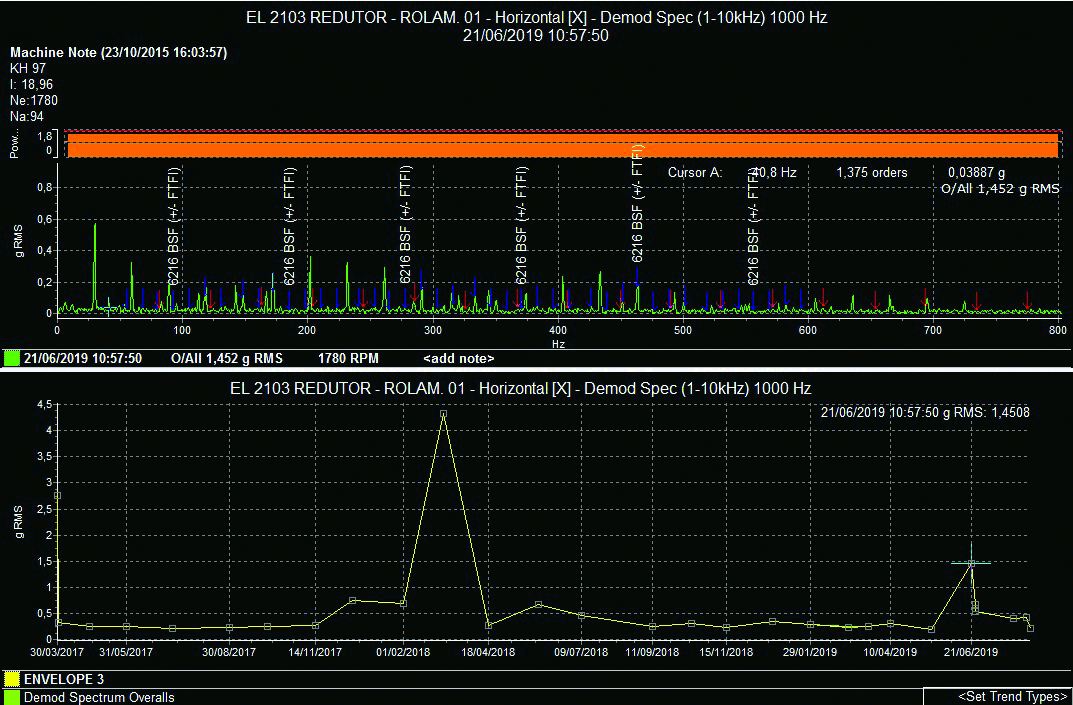
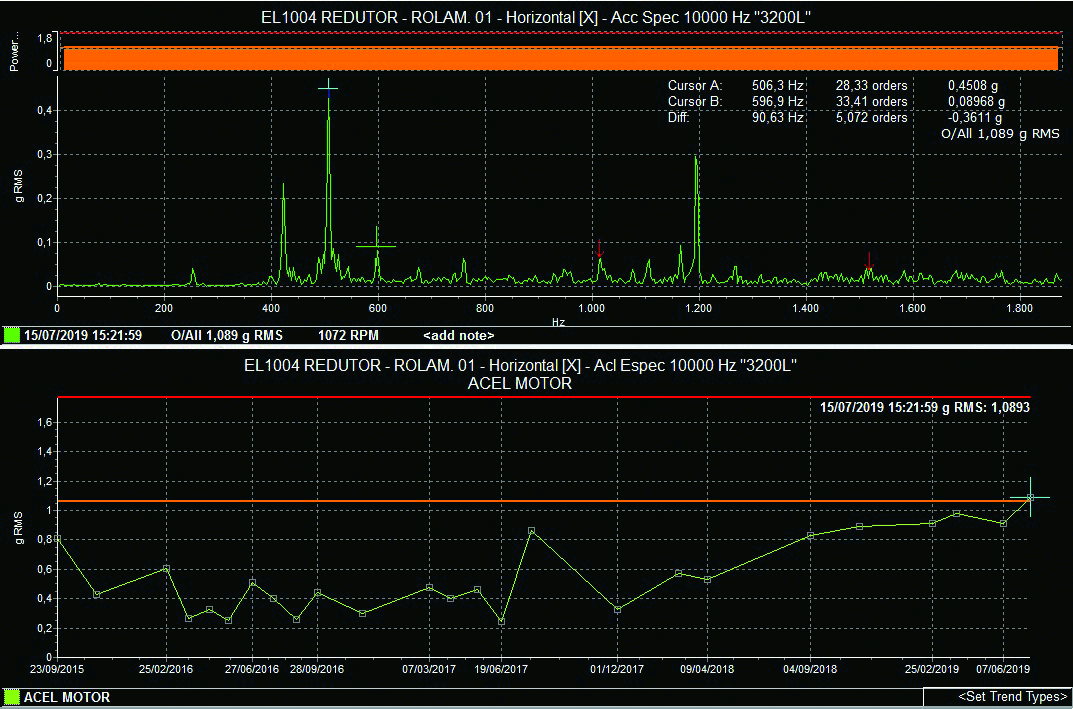
The plant soon discovered that oil analysis had the ability to reveal issues before other predictive maintenance techniques, as alarms would appear in oil analysis reports that did not manifest in the other techniques.
For example, in the oil analysis results for a soybean elevator reducer, the iron content increased from 65 to 527 parts per million (ppm), while the chromium value increased from 0.10 ppm to 0.83 ppm. This was a strong indication of bearing wear.
By analyzing the vibration data for the same month, plant personnel found that the values were still within acceptable limits. However, vibration analysis was able to more accurately identify which element was being worn.
 Although the vibration results were not alarmed, the trend curve revealed the values were rising. Figure 9 shows that these values sounded the first alarm on July 15, 2019, but were still acceptable compared to the oil analysis results, which already indicated high severity. Note also that the chromium value increased from 0.10 ppm in previous samples to 0.83 ppm. This suggested some bearing deterioration. In the same report, other important signs could also be seen, such as a reduction in phosphorus as a result of the increase in iron.
Although the vibration results were not alarmed, the trend curve revealed the values were rising. Figure 9 shows that these values sounded the first alarm on July 15, 2019, but were still acceptable compared to the oil analysis results, which already indicated high severity. Note also that the chromium value increased from 0.10 ppm in previous samples to 0.83 ppm. This suggested some bearing deterioration. In the same report, other important signs could also be seen, such as a reduction in phosphorus as a result of the increase in iron.
A similar situation occurred with one of the plant’s lift gearboxes. In this case, the issue also was detected first through oil analysis and only later through vibration analysis. Figure 11 shows the trend of increasing iron levels from the oil analysis results.
Meanwhile, the gearbox’s vibration analysis results for the same month were normal. It wasn’t until more than a month later that an increase in the vibration values indicated an input shaft bearing failure.
With this information in mind, plant personnel decided to intervene in the machine and replace the damaged oil and bearing. The rolling elements of the changed bearing attest that both techniques were successful. After the oil and bearing replacement, the vibration analysis showed no defects.
The plant has seen encouraging results from combining oil analysis and vibration analysis. There have been fewer breakdowns and an increase in productivity. Faults are managed and interventions aligned with production planning to reduce downtime. Machine components and the lubricating oil are changed only when necessary to maximize their lifespan. The plant’s balanced equipment vibrates less and consumes less energy. Components like bearings and seals are even lasting longer.
Oil analysis and vibration analysis have proven to be effective techniques for monitoring the condition of assets. While many studies have shown that oil analysis can provide an earlier warning of potential failures, the best results occur when there is an integration of these two techniques, making them both indispensable in today’s maintenance programs.
